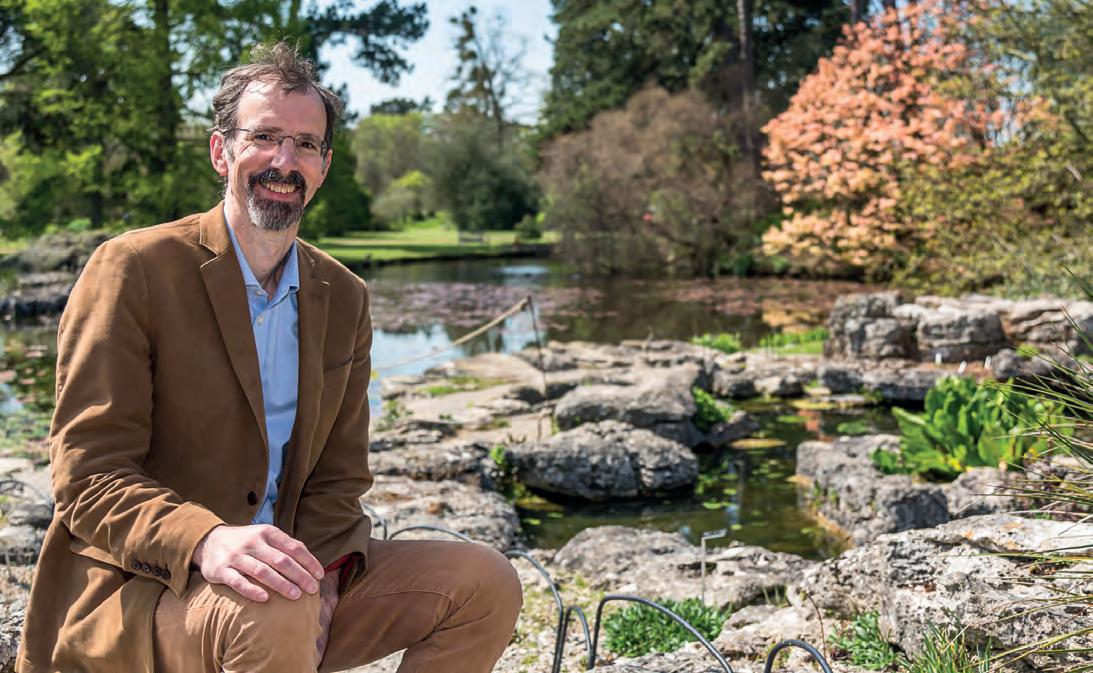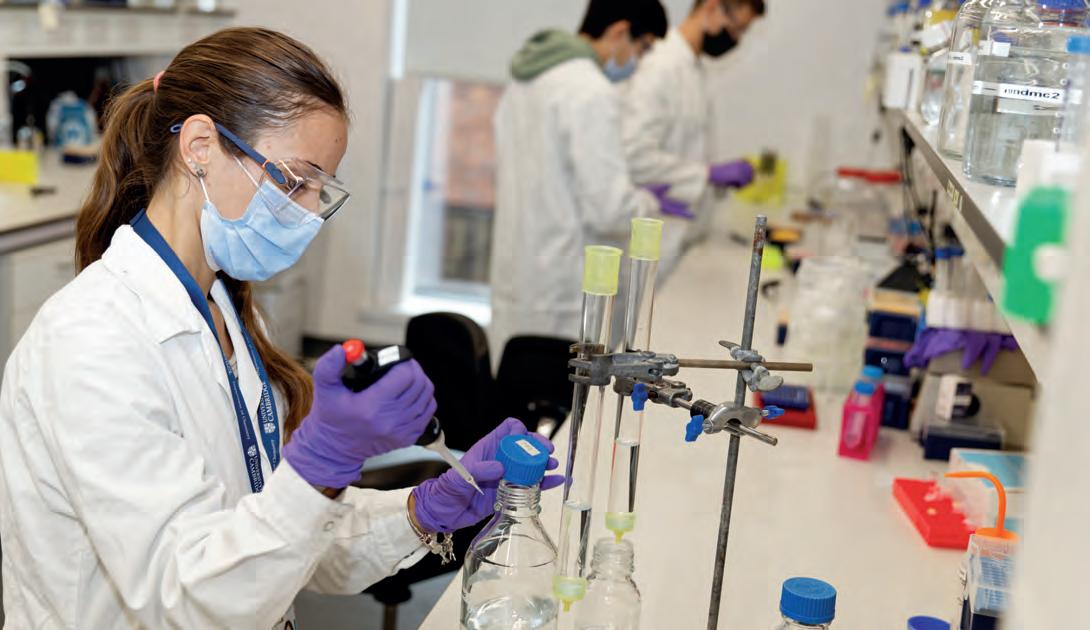
3 minute read
A new way of working _________________________________________________________
Chemistry of Health hosts one of the only incubators to be completely integrated into a UK chemistry department. Professor Michele Vendruscolo, Director of Chemistry of Health, explains why this unique set-up works.
CMD co-director Michele Vendruscolo.
What is the Chemistry of Health building?
About 15 years ago, with our colleague [the late] Professor Chris Dobson and our industrial partners at the time, we saw that a unique mix of interdisciplinary research and industrial resources would be needed to tackle the growing threat of protein misfolding disorders, such as Alzheimer’s and Parkinson’s diseases. The Chemistry of Health building was the result of his vision.
Who occupies the Chemistry of Health?
The Chemistry of Health incubator is on the ground oor and the Centre for Misfolding Diseases is on the second and third oors. The Molecular Production and Characterisation Centre, which o ers biophysical instrumentation, fermentation, microscopy and tissue culture labs, is in the basement.
What does the CMD’s research involve?
We have several ongoing research programmes into Alzheimer’s and Parkinson’s diseases, and other misfolding diseases. The approach that we have taken is to prevent the formation of misfolded protein oligomers, which are particularly toxic small aggregates that play a major role in the build-up of the protein deposits associated with these diseases.
The approval of aducanumab by the FDA in June, which is the rst disease-modifying drug for Alzheimer’s, is a crucial validation of our approach, because it works with a similar mechanism of action as the drugs we that are developing here, by reducing the number of oligomers produced during the aggregation process. Many other di erent therapeutic strategies are still being investigated for this disease, but none of them has led to an approved drug so far – so it has been crucial to see that the route that we have taken has been validated.

“A synergistic relationship that creates bene ts for everyone involved.”
How does the incubator t in?
We develop the basic concept and methods in the CMD, but because the resources needed for a full- edged drug discovery programme are much larger than those that can be typically supplied by academia, we turn it over to the Chemistry of Health incubator, which currently hosts Wren Therapeutics, the company we founded for Alzheimer’s and Parkinson’s diseases. While core technology and several Wren researchers are from the CMD, Wren also has many key people with an industrial background who can lead a drug discovery programme and scale it up to industrial size. We currently have two drug candidates for Alzheimer’s and we are going through all the work that is needed to start clinical trials, planned for next year.
How is this di erent from traditional research?
In other translational programmes the interaction is usually in one direction – from academia to industry. This creates a gap, which often is responsible for failure in the translation process. In our case, to close the gap, we implemented a close feedback from industry to academia. The industry is funding fundamental research in directions that have translational potential, so the two-way interaction can happen more easily. And because of our physical locations, the communication is greatly facilitated. It’s a synergistic relationship that creates bene ts for everyone involved.
How do you mean the industry funds fundamental research?
Wren contributes to the running costs of Chemistry of Health, and funds research and PhD students through the Nidus programme, who don’t typically work on Wren projects [see accompanying article]. If the projects become interesting from a translational point of view, Wren has rst right of refusal.
Are there other advantages to this arrangement?
It provides a career path for students, who might do research in the Department as undergrads, but who can then start their careers in the spin-out companies in the incubator, if they are interested. Many times students approach me because they want to do academic research but they are also interested in industry, so I explain that it’s not necessarily a binary choice.
Why did you set up the Chemistry of Health this way?
We want to overcome the traditional divide between academia and industry. The incubator on site is key to the vision behind the Chemistry of Health – we will see in time if it works or not, but judging from the start I am highly optimistic that the experiment has begun well.










